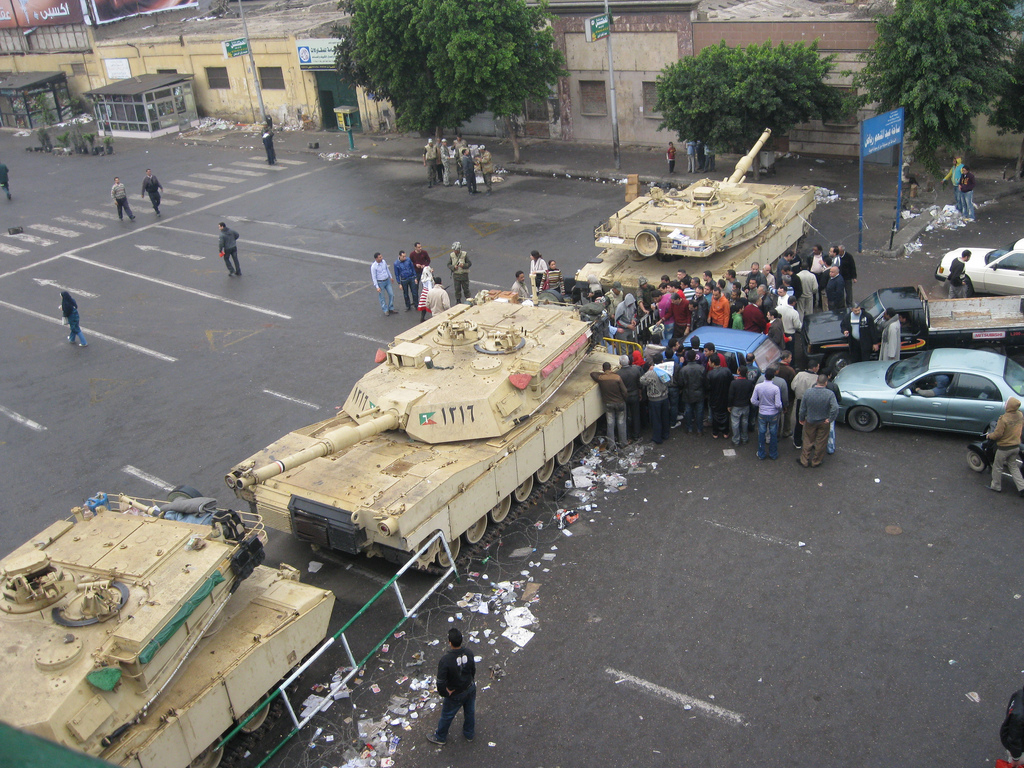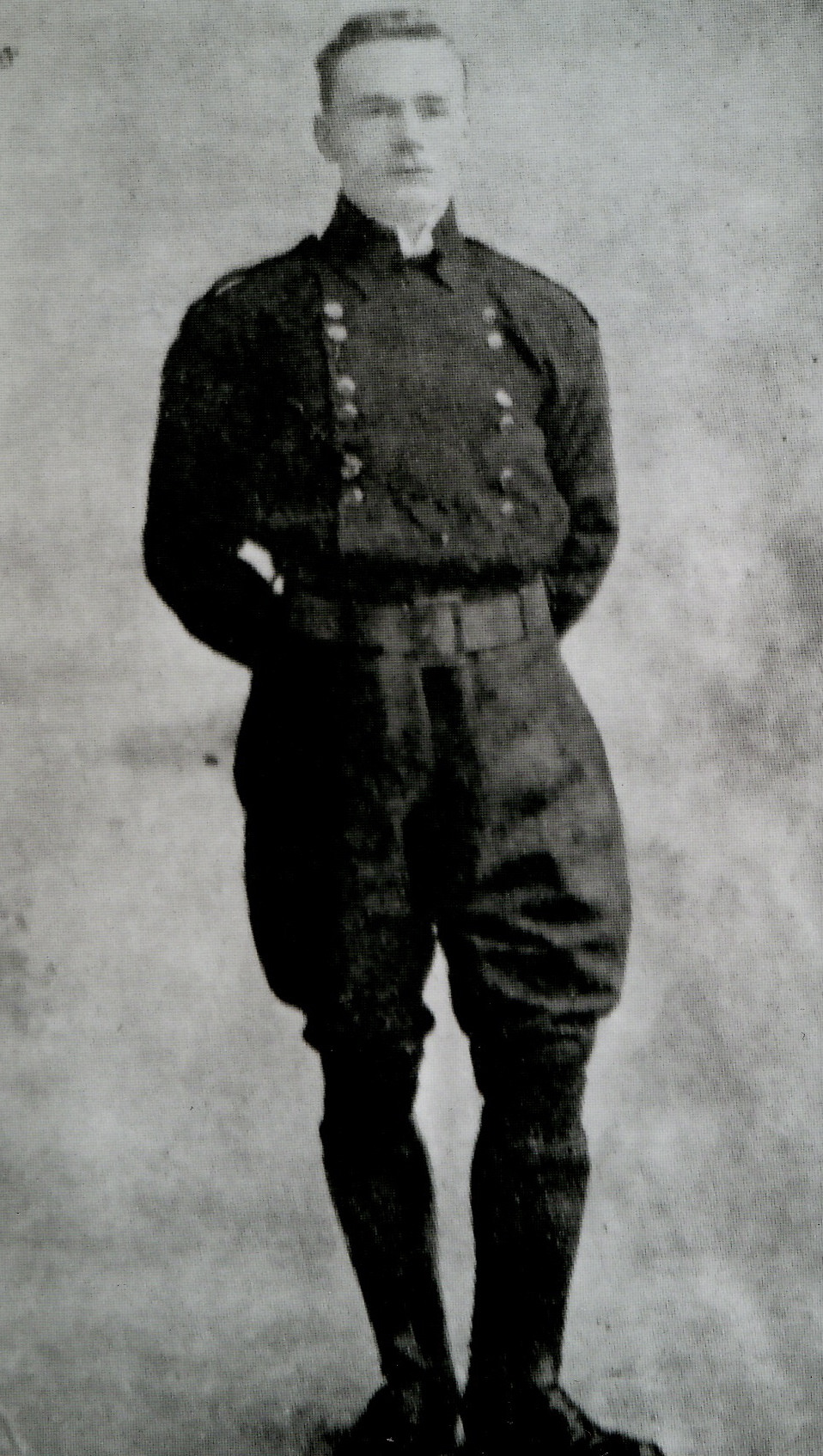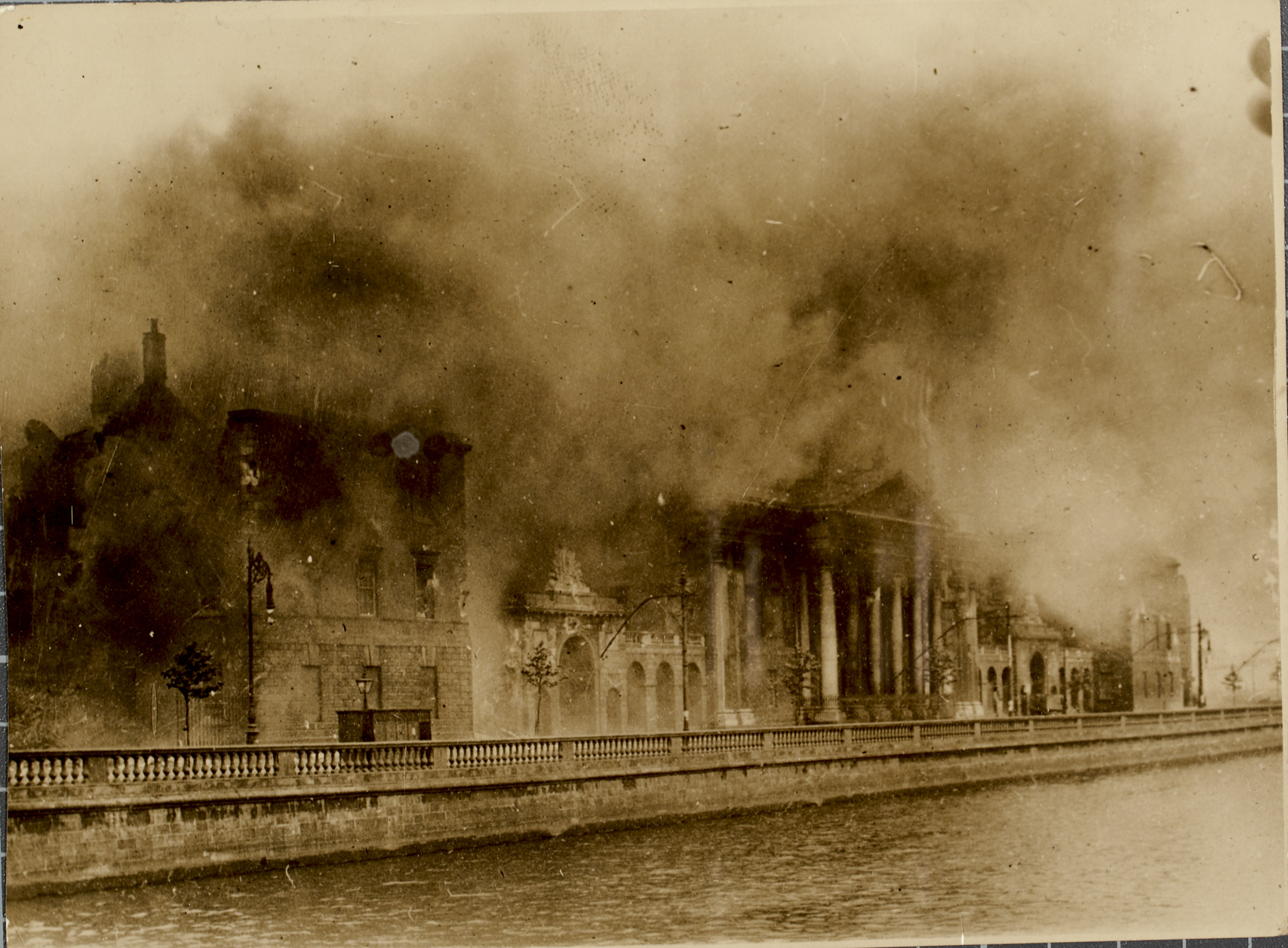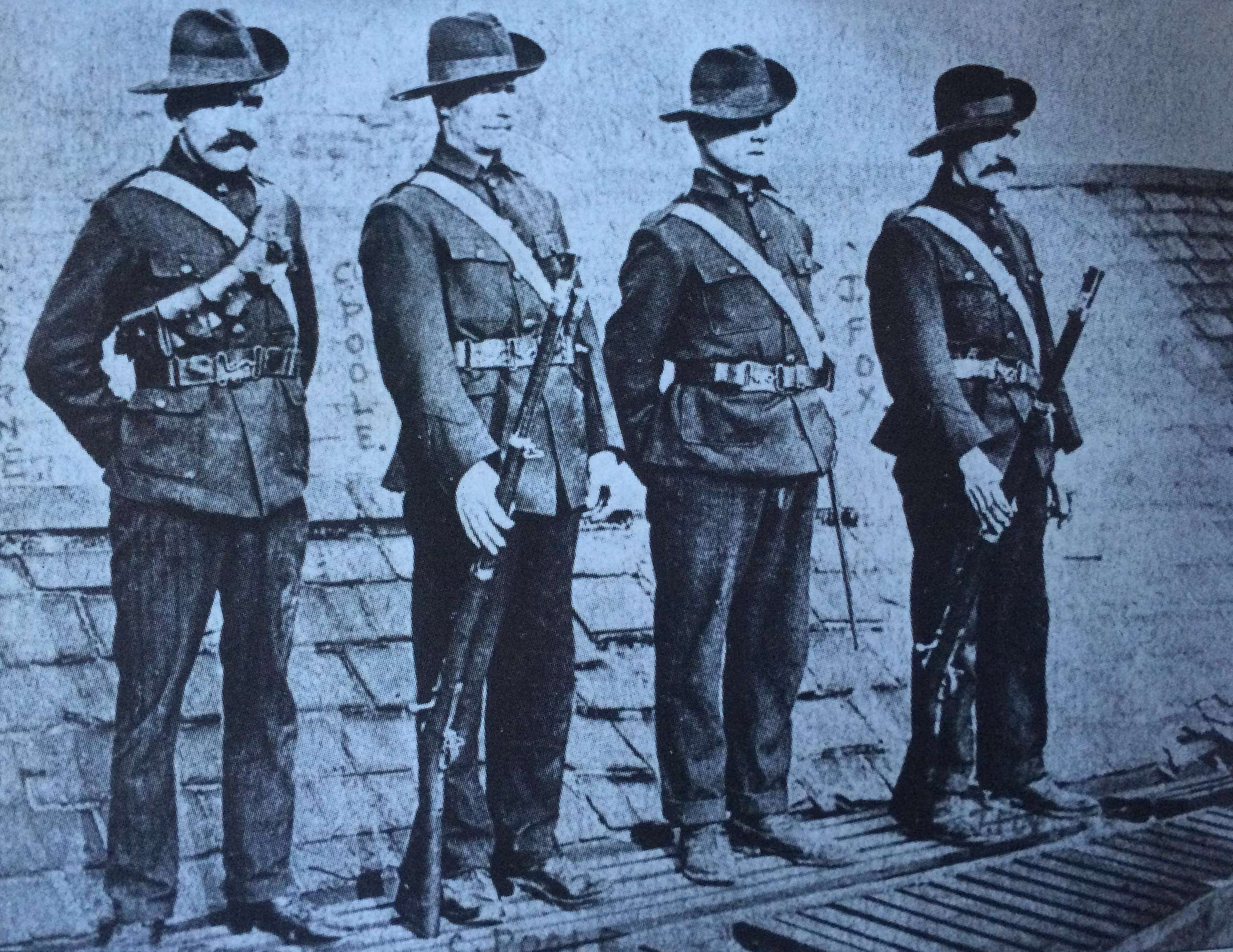|
1916 In Ireland
Events from the year 1916 in Ireland. Events *14 February – John Redmond is re-elected Chairman of the Irish Parliamentary Party in Dublin. *29 February – the week-long Derry Feis opens in the city. * 21 March – a crowd attacks Sinn Féin's Tullamore headquarters; three police are injured. *20–21 April – the German-controlled cargo steamer , masquerading as , is intercepted by the Royal Navy and scuttled following an unsuccessful attempt to land arms for the Irish Volunteers in Tralee Bay. *21 April – Roger Casement and two others are arrested at Banna Strand, County Kerry, for attempting to land arms and ammunition. *22 April – Eoin MacNeill, Chief of Staff of the Irish Volunteers cancels all manoeuvres of Volunteers planned for the following day. *23 April – Easter Sunday: the military council of the Irish Republican Brotherhood meets at Liberty Hall and decides to begin the planned insurrection at noon the next day. The Proclamation of the Republic is sign ... [...More Info...] [...Related Items...] OR: [Wikipedia] [Google] [Baidu] |
John Redmond
John Edward Redmond (1 September 1856 – 6 March 1918) was an Irish nationalism, Irish nationalist politician, barrister, and Member of Parliament (United Kingdom), MP in the House of Commons of the United Kingdom. He was best known as leader of the moderate Irish Parliamentary Party (IPP) from 1900 until his death in 1918. He was also leader of the paramilitary organisation the Irish National Volunteers (INV). He was born to an old prominent Catholic Church, Catholic family in rural Ireland; several relatives were politicians. He took over control of the minority IPP faction loyal to Charles Stewart Parnell when that leader died in 1891. Redmond was a conciliatory politician who achieved the two main objectives of his political life: party unity and, in September 1914, the passing of the Government of Ireland Act 1914. The Act granted limited self-government to Ireland, within the United Kingdom. However, implementation of Home Rule was Suspensory Act 1914, suspended by the ... [...More Info...] [...Related Items...] OR: [Wikipedia] [Google] [Baidu] |
Liberty Hall
Liberty Hall ( ga, Halla na Saoirse), in Dublin, Ireland, is the headquarters of the Services, Industrial, Professional, and Technical Union (SIPTU). Designed by Desmond Rea O'Kelly, it was completed in 1965. It was for a time the tallest building in the country, at 59.4 metres, (195 feet) high until it was superseded by the County Hall in Cork city, which was itself superseded by The Elysian in Cork. Liberty Hall is now the fourth tallest building in Dublin, after Capital Dock, Montevetro (now Google Docks) and the Millennium Tower in Grand Canal Dock. Liberty Hall is more historically significant in its earlier form, as the headquarters of the Irish Transport and General Workers Union early in the 20th century, and also as the headquarters of the Irish Citizen Army (ICA). History Standing on Beresford Place and Eden Quay, near the Custom House, the original Liberty Hall was built as the Northumberland Hotel before it became the headquarters of the Irish Citizen ... [...More Info...] [...Related Items...] OR: [Wikipedia] [Google] [Baidu] |
Martial Law
Martial law is the imposition of direct military control of normal civil functions or suspension of civil law by a government, especially in response to an emergency where civil forces are overwhelmed, or in an occupied territory. Use Martial law can be used by governments to enforce their rule over the public, as seen in multiple countries listed below. Such incidents may occur after a coup d'état ( Thailand in 2006 and 2014, and Egypt in 2013); when threatened by popular protest (China, Tiananmen Square protests of 1989); to suppress political opposition ( martial law in Poland in 1981); or to stabilize insurrections or perceived insurrections. Martial law may be declared in cases of major natural disasters; however, most countries use a different legal construct, such as a state of emergency. Martial law has also been imposed during conflicts, and in cases of occupations, where the absence of any other civil government provides for an unstable population. Examples of ... [...More Info...] [...Related Items...] OR: [Wikipedia] [Google] [Baidu] |
County Galway
"Righteousness and Justice" , anthem = () , image_map = Island of Ireland location map Galway.svg , map_caption = Location in Ireland , area_footnotes = , area_total_km2 = 6151 , area_rank = 2nd , seat_type = County town , seat = Galway , population_total = 276451 , population_density_km2 = auto , population_rank = 5th , population_as_of = 2022 , population_footnotes = , leader_title = Local authorities , leader_name = County Council and City Council , leader_title2 = Dáil constituency , leader_name2 = , leader_title3 = EP constituency , leader_name3 = Midlands–North-West , subdivision_type = Country , subdivision_name = Ireland , subdivision_type1 = Province , subdivision_name1 = Connacht , subdivision ... [...More Info...] [...Related Items...] OR: [Wikipedia] [Google] [Baidu] |
Liam Mellows
William Joseph Mellows ( ga, Liam Ó Maoilíosa, 25 May 1892 – 8 December 1922) was an Irish republican and Sinn Féin politician. Born in England to an English father and Irish mother, he grew up in Ashton-under-Lyne before moving to Ireland, being raised in Cork, Dublin and his mother's native Wexford. He was active with the Irish Republican Brotherhood and Irish Volunteers, and participated in the Easter Rising in County Galway and the War of Independence. Elected as a TD to the First Dáil, he rejected the Anglo-Irish Treaty. During the Irish Civil War Mellows was captured by Pro-Treaty forces after the surrender of the Four Courts in June 1922. On 8 December 1922 he was one of four senior IRA men executed by the Provisional Government. Early life Mellows was born at the Hartshead Military Barracks in Ashton-under-Lyne on 25 May 1892, the son of William Joseph Mellows, an English man who worked as an NCO in the British Army, and Sarah Jordan, an Irish woman from Inch, Co ... [...More Info...] [...Related Items...] OR: [Wikipedia] [Google] [Baidu] |
General Post Office, Dublin
The General Post Office (GPO; ga, Ard-Oifig an Phoist) is the headquarters of An Post — the Irish Post Office. It is the principal post office of Dublin — the capital city of Ireland — and is situated in the centre of O'Connell Street, the city's main thoroughfare. It is one of Ireland's most famous buildings, not least because it served as the headquarters of the leaders of the Easter Rising against British rule in Ireland. It was the last great Georgian public building to be erected in the capital. Architecture The foundation-stone of the building, which was designed by Francis Johnston, was laid by the Lord Lieutenant of Ireland, Charles Whitworth, 1st Earl Whitworth, on 12 August 1814, attended by the Post-Masters-General, Charles O'Neill, 1st Earl O'Neill and Laurence Parsons, 2nd Earl of Rosse. The structure was completed in the short space of approximately three years at a cost (depending on sources) of between £50,000 and £80,000. The front elevation is 6 ... [...More Info...] [...Related Items...] OR: [Wikipedia] [Google] [Baidu] |
Patrick Pearse
Patrick Henry Pearse (also known as Pádraig or Pádraic Pearse; ga, Pádraig Anraí Mac Piarais; 10 November 1879 – 3 May 1916) was an Irish teacher, barrister, poet, writer, nationalist, republican political activist and revolutionary who was one of the leaders of the Easter Rising in 1916. Following his execution along with fifteen others, Pearse came to be seen by many as the embodiment of the rebellion. Early life and influences Pearse, his brother Willie, and his sisters Margaret and Mary Brigid were born at 27 Great Brunswick Street, Dublin, the street that is named after them today. It was here that their father, James Pearse, established a stonemasonry business in the 1850s, a business which flourished and provided the Pearses with a comfortable middle-class upbringing. Pearse's father was a mason and monumental sculptor, and originally a Unitarian from Birmingham in England. His mother, Margaret Brady, was from Dublin, and her father's family from County Meath we ... [...More Info...] [...Related Items...] OR: [Wikipedia] [Google] [Baidu] |
Mendicity Institution
The Mendicity Institution in Dublin, Ireland, is one of Ireland's and Dublin's oldest charities. It continues its charitable work, including providing meals to Dublin's needy, from its premises at Moira House, Island Street, to the south of Usher's Island, its former location. History Early years Following a meeting of businesspeople in 1817, and drawing on work in other European cities, the Institution was established in 1818 as the Mendicity Association. Its aim was to provide food, clothing, education and lodging for the poor of Dublin, and it was one of many that were established in Dublin to relieve the poverty that pervaded the city at that time. There was no broad system of public welfare, nor, until some time later, any general policy on the part of the government to alleviate poverty. It was left to parishes (which in the poorer areas of the city had very little to spare), private individuals and institutions, such as the House of Industry to ease poverty through volunt ... [...More Info...] [...Related Items...] OR: [Wikipedia] [Google] [Baidu] |
Four Courts
The Four Courts ( ga, Na Ceithre Cúirteanna) is Ireland's most prominent courts building, located on Inns Quay in Dublin. The Four Courts is the principal seat of the Supreme Court, the Court of Appeal, the High Court and the Dublin Circuit Court. Until 2010 the building also housed the Central Criminal Court; this is now located in the Criminal Courts of Justice building. Court structure The building originally housed four superior courts, of Chancery, King's Bench, Exchequer and Common Pleas, giving the name to the building. Under the Supreme Court of Judicature Act (Ireland) 1877, these four courts were replaced by two - the Court of Appeal, presided over by the Lord Chancellor, and the High Court of Justice, headed by the Lord Chief Justice - but the building has retained its historic name. Under the Courts of Justice Act 1924, courts were established for the new Irish Free State with the Supreme Court of Justice, presided over by the Chief Justice, replacing the ... [...More Info...] [...Related Items...] OR: [Wikipedia] [Google] [Baidu] |
General Post Office (Dublin)
The General Post Office (GPO; ga, Ard-Oifig an Phoist) is the headquarters of An Post — the Irish Post Office. It is the principal post office of Dublin — the capital city of Ireland — and is situated in the centre of O'Connell Street, the city's main thoroughfare. It is one of Ireland's most famous buildings, not least because it served as the headquarters of the leaders of the Easter Rising against British rule in Ireland. It was the last great Georgian public building to be erected in the capital. Architecture The foundation-stone of the building, which was designed by Francis Johnston, was laid by the Lord Lieutenant of Ireland, Charles Whitworth, 1st Earl Whitworth, on 12 August 1814, attended by the Post-Masters-General, Charles O'Neill, 1st Earl O'Neill and Laurence Parsons, 2nd Earl of Rosse. The structure was completed in the short space of approximately three years at a cost (depending on sources) of between £50,000 and £80,000. The front elevation is 6 ... [...More Info...] [...Related Items...] OR: [Wikipedia] [Google] [Baidu] |
Irish Citizen Army
The Irish Citizen Army (), or ICA, was a small paramilitary group of trained trade union volunteers from the Irish Transport and General Workers' Union (ITGWU) established in Dublin for the defence of workers' demonstrations from the Dublin Metropolitan Police. It was formed by James Larkin, James Connolly and Jack White on 23 November 1913. Other prominent members included Seán O'Casey, Constance Markievicz, Francis Sheehy-Skeffington, P. T. Daly and Kit Poole. In 1916, it took part in the Easter Rising, an armed insurrection aimed at ending British rule in Ireland. Following the Easter Rising, the death of James Connolly and the departure of Jim Larkin, the ICA largely sidelined itself during the Irish War of Independence by choosing to only offer material support to the Irish Republican Army and not become directly involved itself. Following the ICA's declaration in July 1919 that members could not be simultaneously members of both the ICA and the IRA, combined with t ... [...More Info...] [...Related Items...] OR: [Wikipedia] [Google] [Baidu] |
Easter Rising
The Easter Rising ( ga, Éirí Amach na Cásca), also known as the Easter Rebellion, was an armed insurrection in Ireland during Easter Week in April 1916. The Rising was launched by Irish republicans against British rule in Ireland with the aim of establishing an independent Irish Republic while the United Kingdom was fighting the First World War. It was the most significant uprising in Ireland since the rebellion of 1798 and the first armed conflict of the Irish revolutionary period. Sixteen of the Rising's leaders were executed from May 1916. The nature of the executions, and subsequent political developments, ultimately contributed to an increase in popular support for Irish independence. Organised by a seven-man Military Council of the Irish Republican Brotherhood, the Rising began on Easter Monday, 24 April 1916 and lasted for six days. Members of the Irish Volunteers, led by schoolmaster and Irish language activist Patrick Pearse, joined by the smaller Irish Citizen Arm ... [...More Info...] [...Related Items...] OR: [Wikipedia] [Google] [Baidu] |

.jpg)










